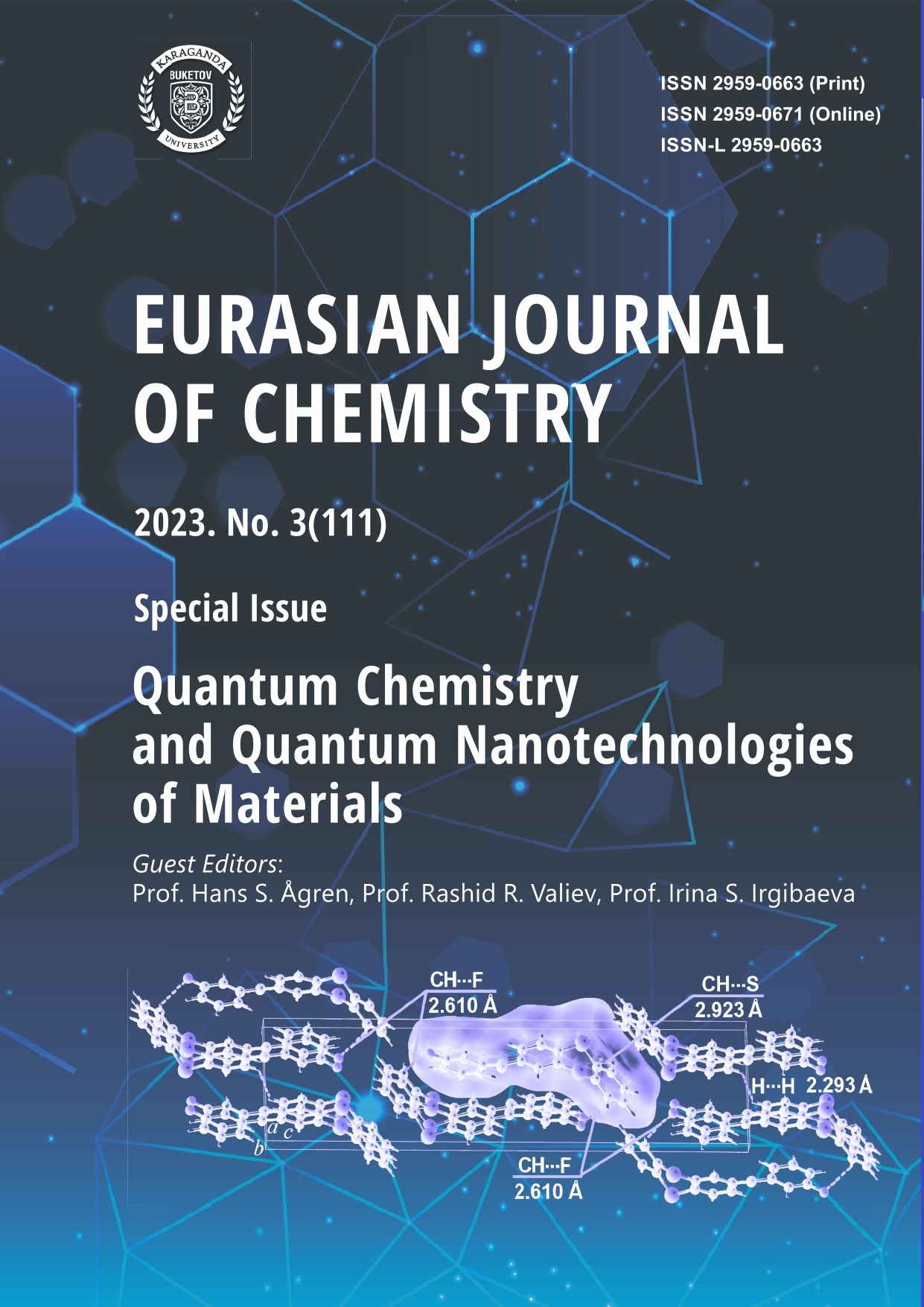Mechanisms of Docking of Superoxide Ions in the Catalytic Cycle of Manganese and Iron Superoxide Dismutases
DOI:
https://doi.org/10.31489/2959-0663/3-23-4Keywords:
manganese superoxide dismutase, iron superoxide dismutase, electron transfer, computer simulation, density functional theory, catalytic mechanismAbstract
In this paper, we propose an approach to resolving some questions about the catalytic action of manganese and iron superoxide dismutases. At the level of a pure quantum-chemical calculation using an ORCA 5.0.3 program, a PBE functional and a def2-SVP and def2-TZVP basis sets, the possible mechanisms of superoxide ions binding to the active sites of enzymes, the electron transfer distances and their characteristics were established. It is shown that the initial form of the fifth ligand in both active sites is the hydroxide ion OH–. Before the primary electron transfer, active sites are protonated, the hydroxide ion is converted into a water molecule H2O. Primary electron transfers from the superoxide ion to Mn3+-SOD and Fe3+-SOD occur by the associative mechanism, with the formation of an octahedral complex, at a transfer distance of 1.95 Å and 2.56 Å, respectively. At the second stage, the superoxide ion accepts the electron by the substitution mechanism from Mn2+-SOD at the transfer distance of 2 Å to form bonds with the water molecule and a tyrosine. The superoxide ion accepts the electron from Fe2+-SOD through the outer-sphere mechanism, where it binds to a histidine and the water molecule at the transfer distance of 4.24 Å.
Downloads
Published
How to Cite
Issue
Section
License
This work is licensed under a Creative Commons Attribution-NonCommercial-NoDerivatives 4.0 International License.
Authors retain copyright and grant the journal right of first publication with the work simultaneously licensed under a Creative Commons Attribution License (CC BY-NC-ND 4.0) that allows others to share the work with an acknowledgement of the work's authorship and initial publication in this journal.




